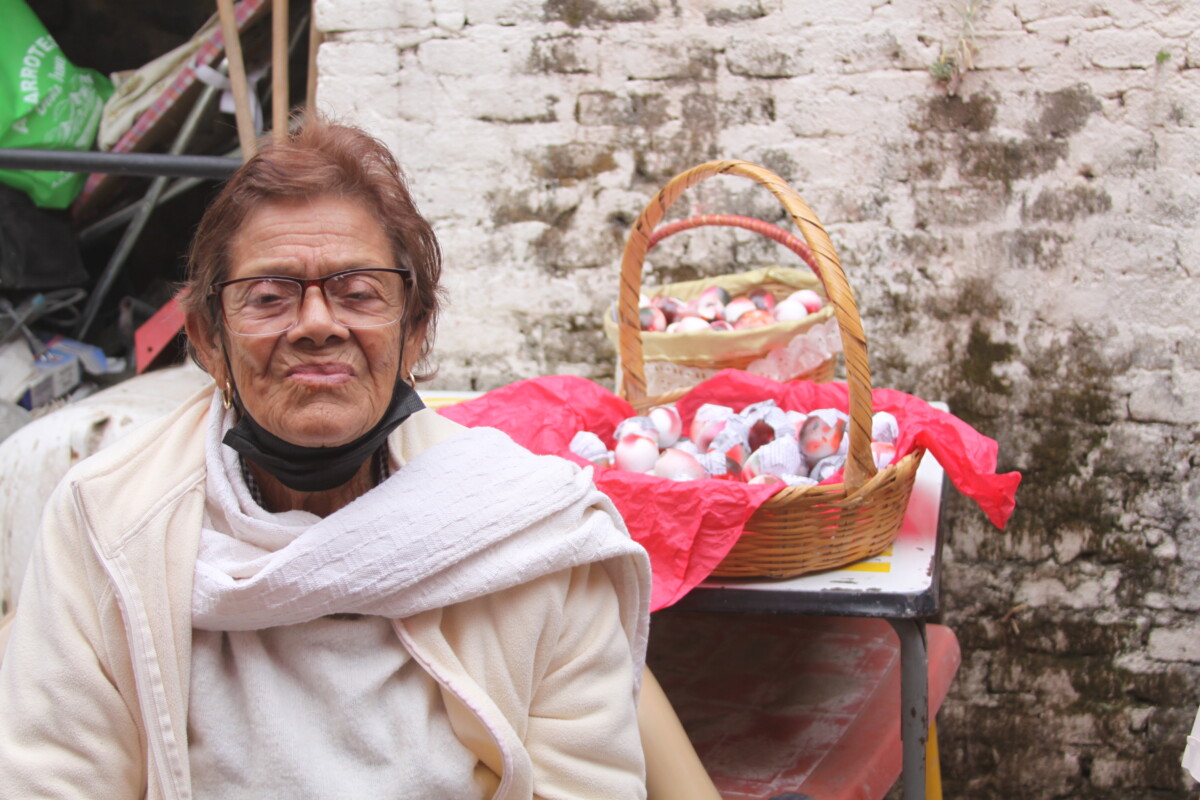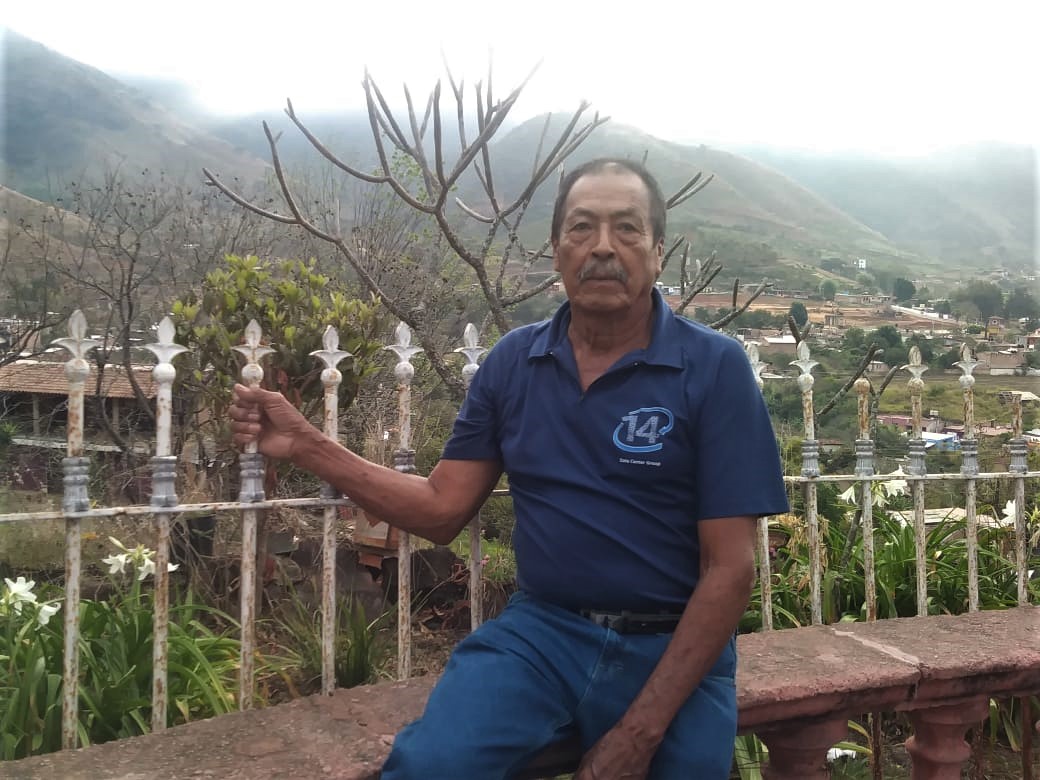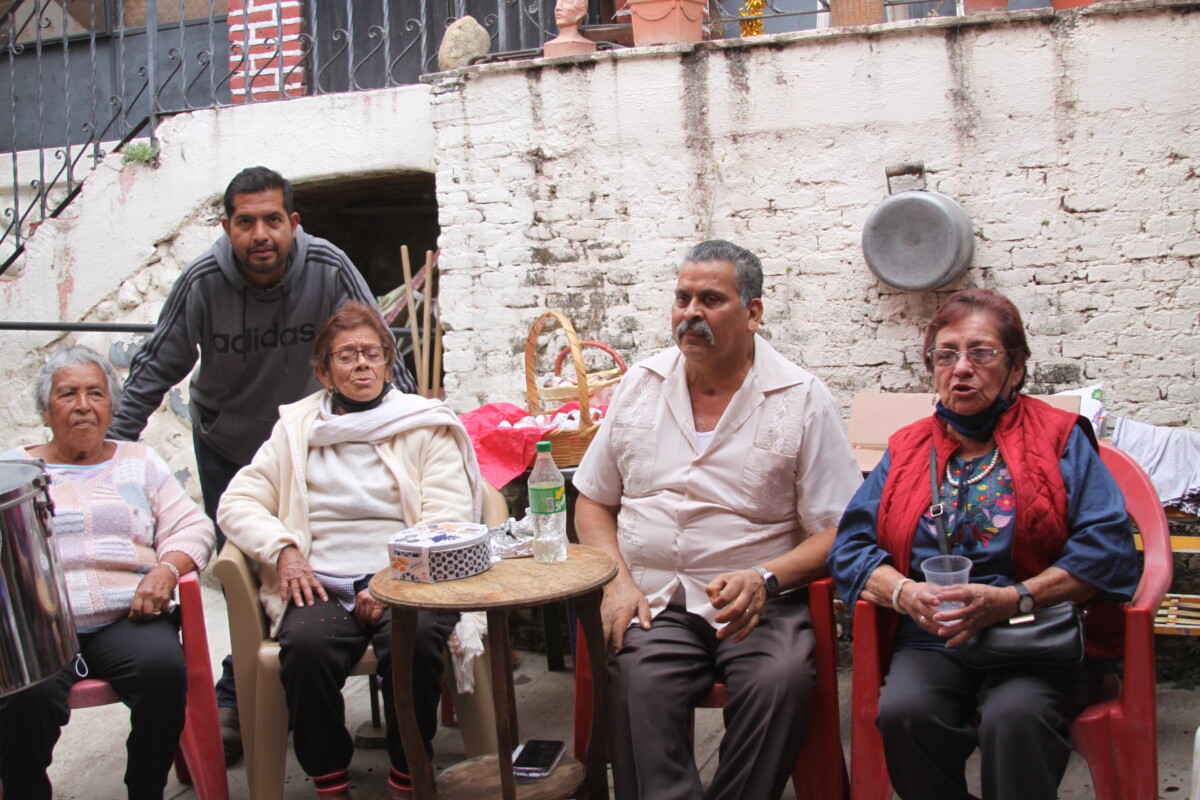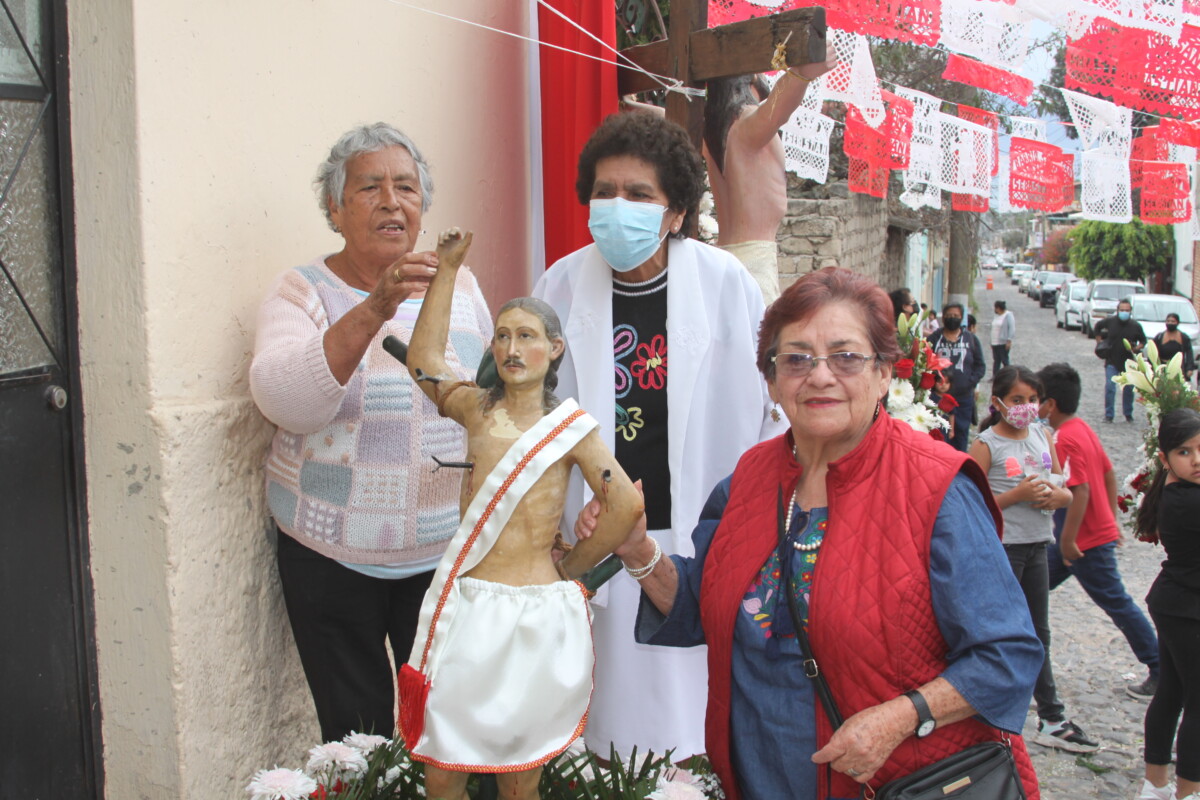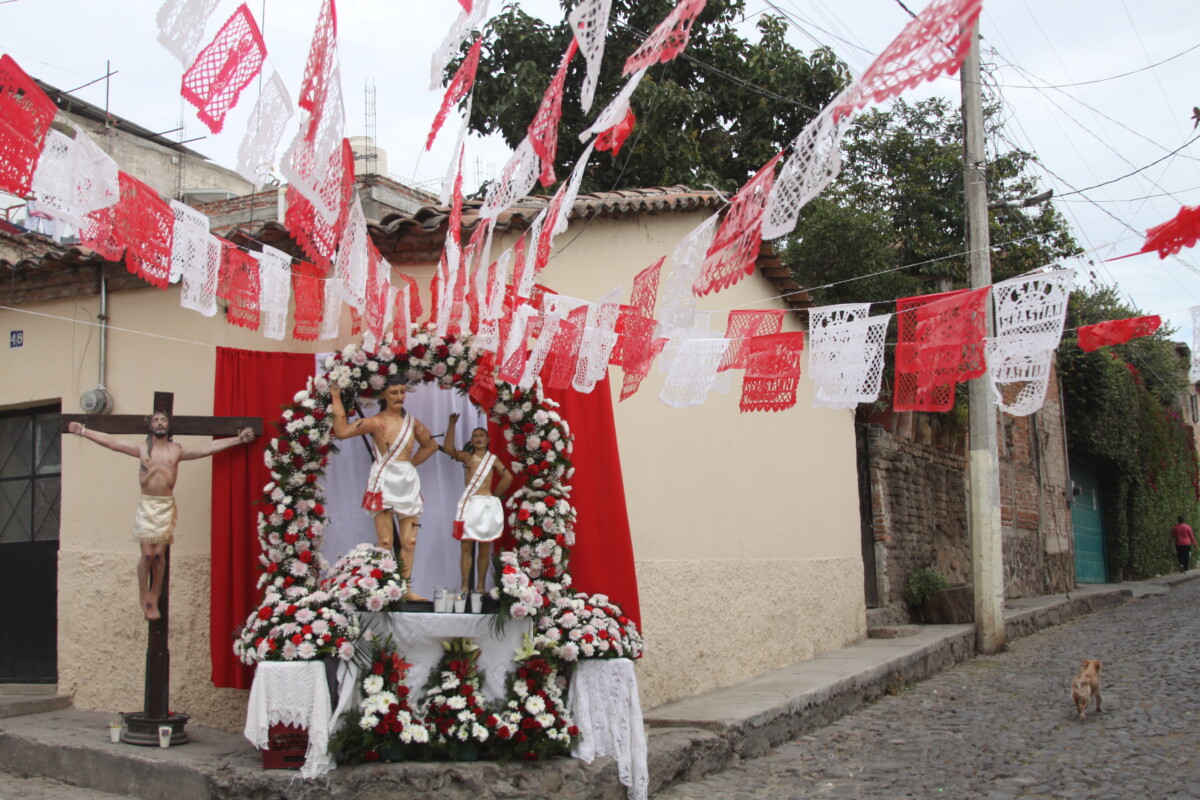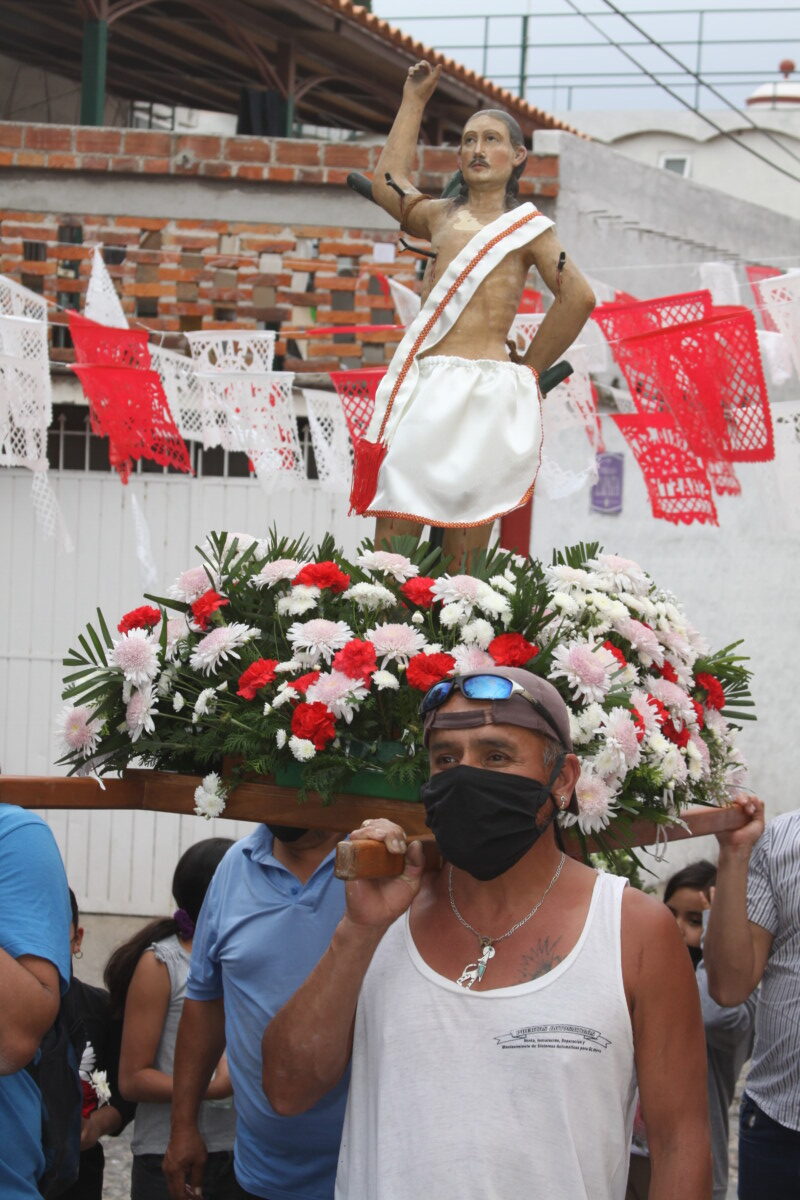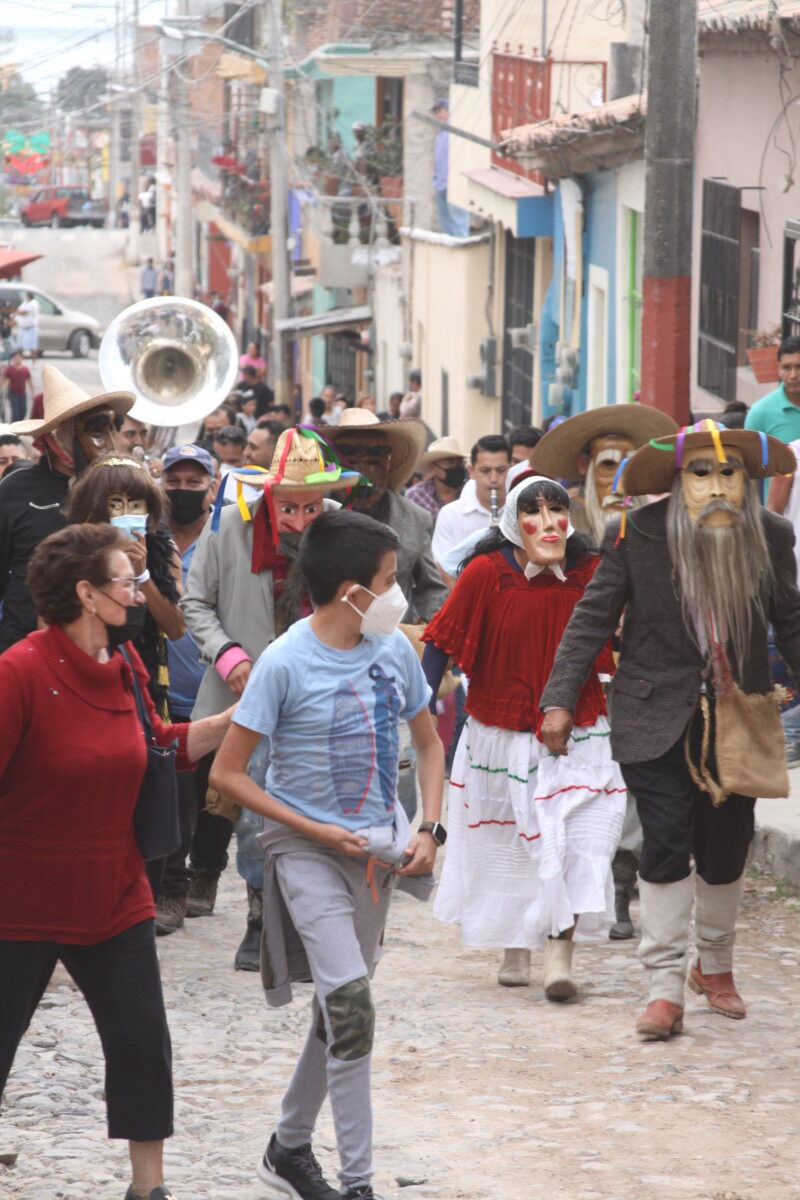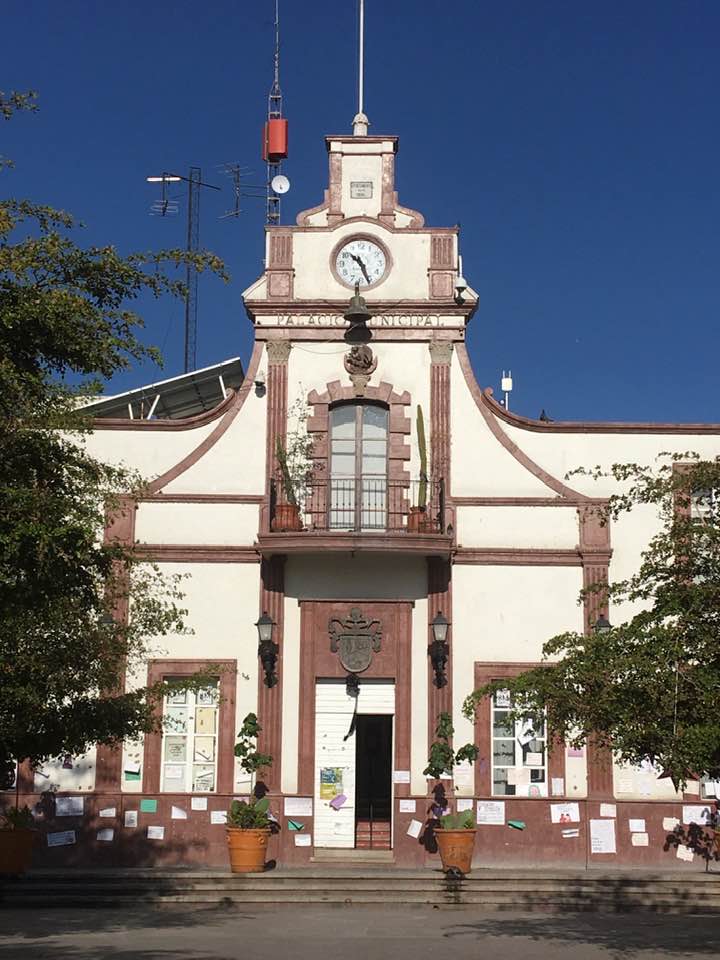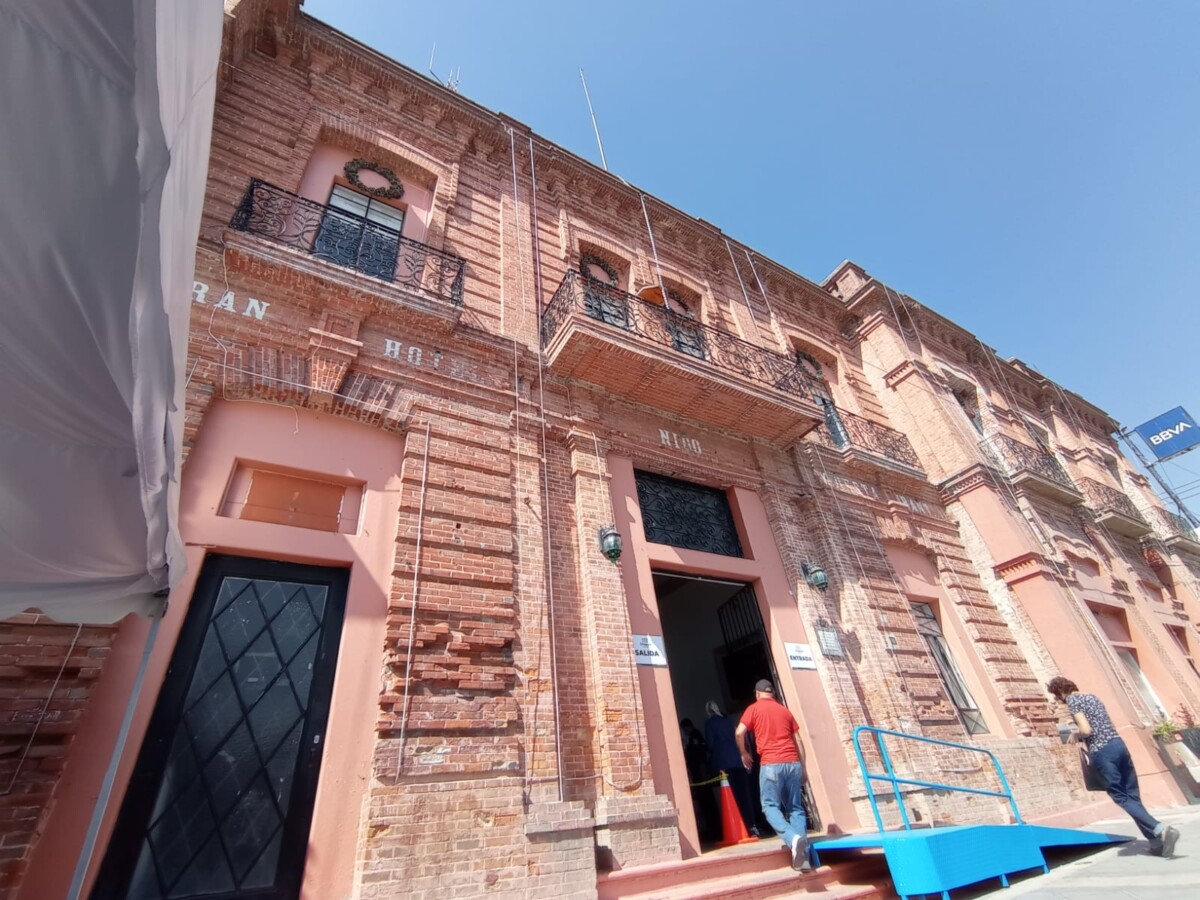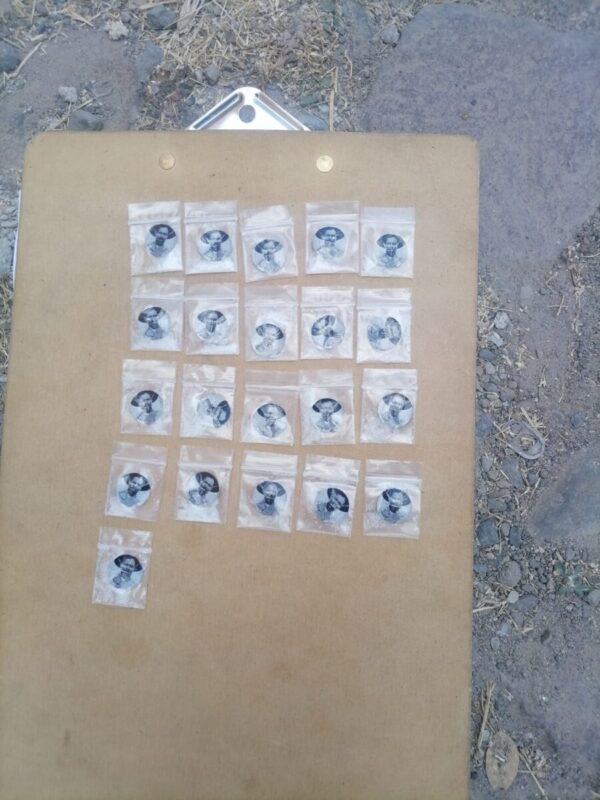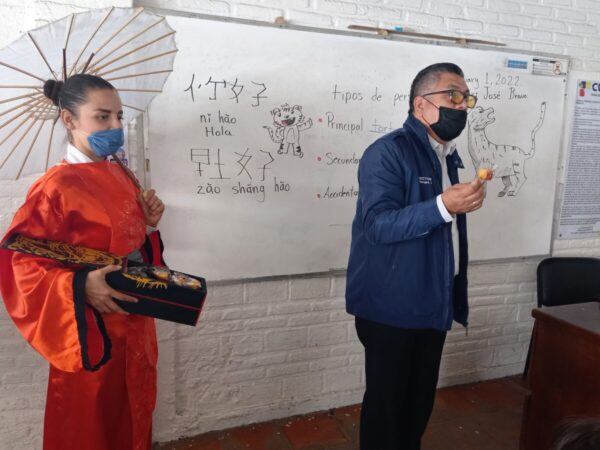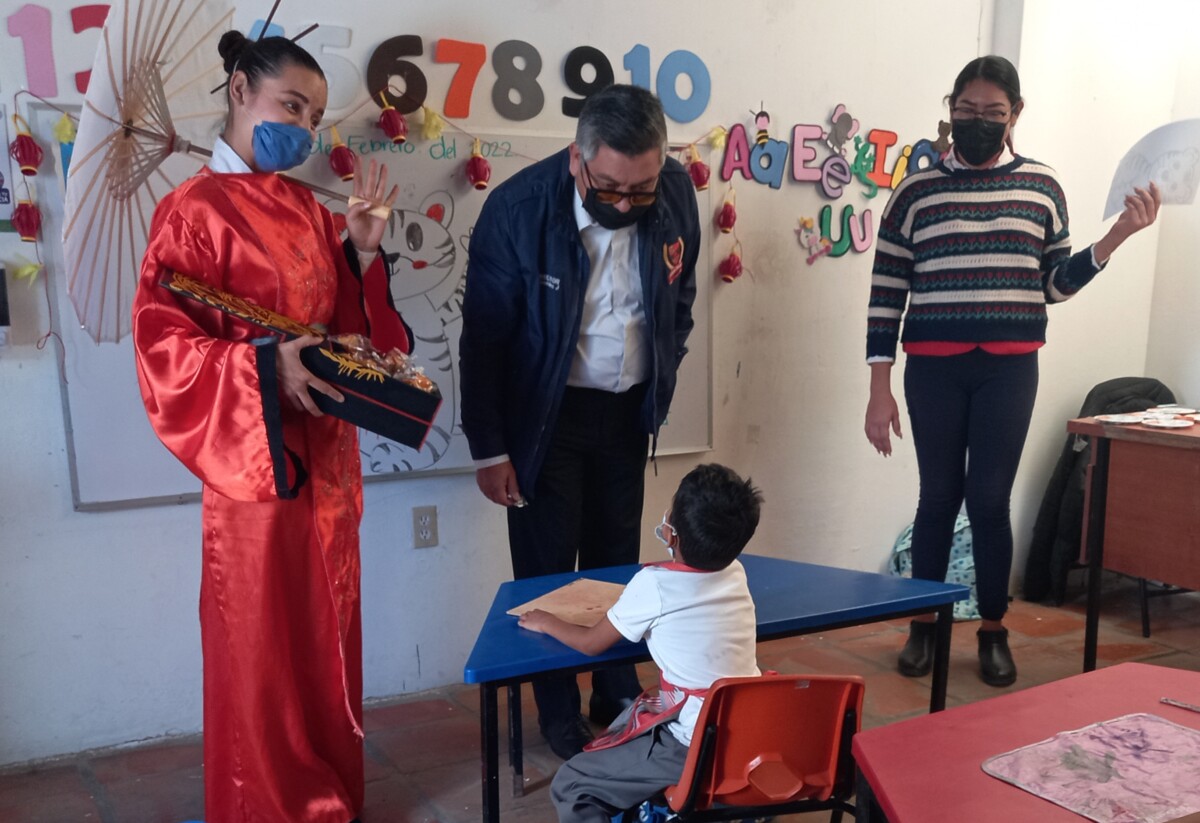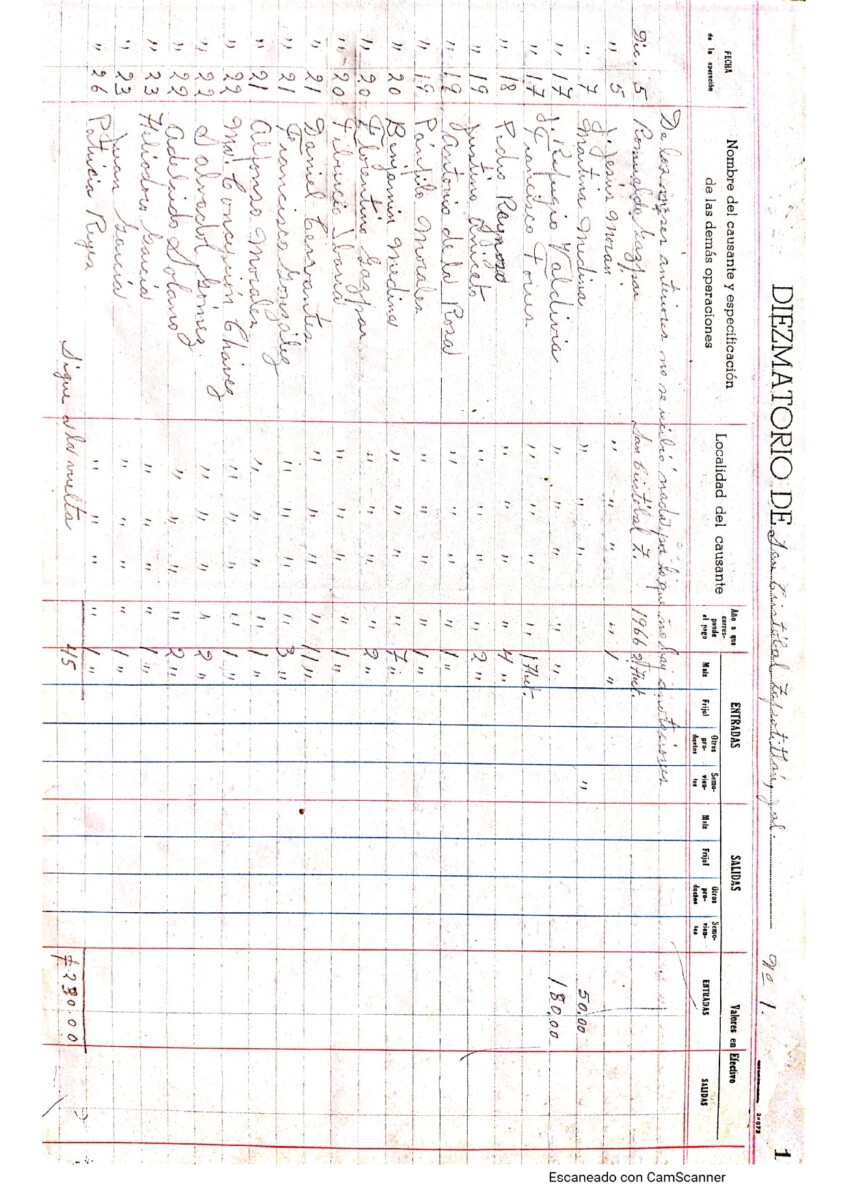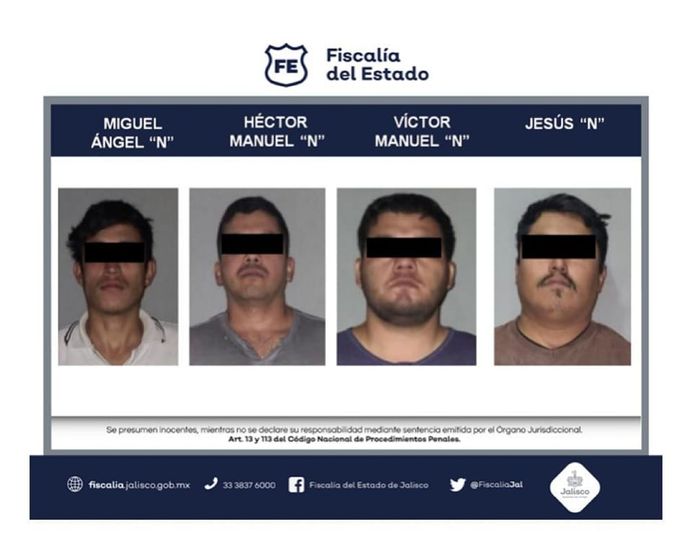ribera
Lakeside Chronicles: The feast of San Sebastian
Doña Irene prepared the eggshells with confetti weeks before
María del Refugio Reynozo Medina (Ajijic) – January 20 is the most awaited day for the devotees of San Sebastian.
Doña Irene is 82 years old. As a child, she accompanied her parents to the celebration of San Sebastian. She has lines of time on her face; most of them are hints of a smile, because Doña Irene smiles a lot. Her chatter is a contagious melody. She welcomes the visitor as if she had seen him yesterday and as if she already knew him. “Let’s have a little refreshment,» she says. Her conversation invites you to stay and contemplate the afternoon by the cobblestone street.
Although now it is not like other years, she is looking forward to the feast of San Sebastian with joy and she is providing almost 30 chickens for the mole.
Irene Martínez Cervantes lives in the San Sebastián neighborhood in Ajijic.
She remembers her parents’ veneration for the patron saint San Sebastian, whom they celebrated every year on January 20. Her family used to organize this celebration and she decided to continue it, despite the Covid-19 pandemic restrictions.
Seventy-five-year-old Don Antonio Arceo, another of the organizers, follows the tradition of his ancestors. He remembers that in the past, the sponsor of the festival was by invitation.
Two or three months before the festival, those who had been in charge the previous year would select another person to continue the tradition. The previous organizers would visit the new person, bringing a carafe of tamarind or pomegranate punch as a gift. They would bury the tightly closed punch for up to two months and add pieces of quince when it was unburied. When the drink was ready, the new sponsor agreed to assume the responsibility of covering the expenses of the drink, the food, the music and the tachihual bread (a traditional bread loaf). The new sponsor recruited ten to twelve people to help him. The following year he would make the same invitation to another acquaintance.
A handshake, a shared drink of punch and a word as a guarantee was enough to close the commitment. So says the song that is engraved in the memory of the faithful, by dint of repeating it every year during music and confetti.
This charge I give them
to those who remain.
So that they never forget it
and that they pay for it.
Weeks before January 20, Doña Irene starts to paint eggshells and fills them with confetti for the papaqui (the throwing of eggshells and confetti to the rhythm of the song of San Sebastian) That is why one of the mischievous stanzas says:
Poor San Sebastian
who never knew underpants.
The first ones he bought
he exchanged them for eggshells.
On the day of the procession Doña Irene is sitting inside the courtyard with some of her co-workers and close friends. She watches with pleasure the parade of men, women and children who come for the plates of food. Women and children carry towers of plates of mole, beans and rice to their homes. Some men take their rations and packages of tortillas to eat sitting on the sidewalks.
At the corner of Emiliano Zapata and Marcos Castellanos streets sits the altar to San Sebastian. There are two figures. The smaller one measuring approximately one meter and brought from the church the previous day. The other is one about a meter and a half that Doña Irene had sculpted. They are in the middle of a large arch of red carnations and chrysanthemums, on a table covered with white tablecloths.
“There are few people now,» says one of the attendants. Before the pandemic, food was served at tables set up along the street, and casseroles with rice and mole accompanied the procession.
Music has been playing since last night at San Sebastian. Not just one band, «it’s a group,» a young man tells me. Members of different bands come to play for the patron saint.
One woman and seven men make up the cast to liven up the procession. After three o’clock in the afternoon, they begin to prepare the small wooden platform where the smallest sculpture of San Sebastian, loaned from the parish, will be placed. He has starred in the festival for as long as they can remember.
Saint Sebastian is shown with one arm backwards tied to a pole and the other bent towards the heavens. His right index finger is missing. He has a taciturn look, curly shoulder-length hair, a mustache, thin outlined eyebrows and a cracked chest and arm. Five arrows are embedded in his body, which, according to the history of the saints, recall the rain of arrows he received in his martyrdom.
Doña Irene approaches with her companions to see him off, they surround him and talk in his ear, because he will not visit them again until next year. Little by little about 50 people arrive. The band begins to play. Suddenly the first sayaco (traditional, cross-dressing, masked characters who throw confetti or flour) appears wearing a work shirt, khaki colored jacket, boots, hat, and a backpack. He wears a long raw-colored wooden mask, from his cheeks emerges a long beard, bushy eyebrows and a straw-colored mustache.
Six more sayacos arrive dressed as exotic women. One of them, aided by a pair of balloons, shows off her bulging breasts under a flowered blouse. Another wears a blouse of gold and black threads with a tiara of sequins. The youngest sayaco looks like a teenaged girl wearing a scarf over her crimson-plated mask and a black dress edged with blue lace. She stomps her booties on the uneven streets.
The sayacos lead the procession dancing and waving their circular skirts non-stop, followed by the band. The sculpture of San Sebastian follows, carried on the shoulders of four men. As it passes through the elementary school, the students come out to watch through the entrance gate. The sayacos bring their masks close to the gate while the little ones laugh.
San Sebastian is returned to the parish amidst cheers and applause. The sayacos do not enter the temple and they wait outside to return in procession with the music of the band.
Now the Sayacos are the absolute masters of the parade, they take out fists of confetti from their backpacks to throw at the women. Up on a balcony a little girl hides between her mother’s legs, a sayaco jumps to scare her, the little girl cries and the woman laughs and hugs her. A group of about 30 children taunt the sayacos, run and urge them to chase them. Upon their arrival in the heart of the neighborhood outside Doña Irene’s house, the music continues to play and the Sayacos dance a little. Less than 30 attendees begin to break shells filled with confetti on their heads while the music plays. There Bertha Baron intones with two accompanists the traditional song to San Sebastian.
Say goodbye to the meat
and also to the sausage.
Because Ash Wednesday is coming
Ash Wednesday is coming.
And so, ends this celebration in which many collaborate, where adults play like children in a rain of confetti, all singing the traditional, fervent and irreverent song.
Translated by Nita Rudy
So far in January, 90 officials of Jocotepec have been infected with Covid-19
Jocotepec City Hall building. Photo: Héctor Ruíz.
Héctor Ruiz Mejía: So far in January alone, the Jocotepec City Hall has a record of 90 officials who have been infected with Covid-19, which has affected the operation of a large percentage of the departments.
Among the affected departments is that of Tourism and Handicrafts, with one positive case, as well as the Treasury, where its head, Marcela Góngora Jiménez, also tested positive.
In Social Communication, as of the closing of this edition, at least two cases had been confirmed and are currently in isolation, said Felipe Aguilar, director of said agency.
There are currently 25 active cases within the City Hall, of which so far no serious cases have been reported in any of those affected.
On the other hand, at least 23 new cases of coronavirus in less than a week were registered in the municipality of Jocotepec, according to official figures from Radar Jalisco.
This resulted in 780 accumulated cases in the Lakeside municipality, with a persistent upward trend, since according to municipal medical authorities, the real upturn after the patron saint festivities is expected in mid-February.
However, doctors of the municipality assured that this figure is far from the full number, since this is only the official figure, without counting the infections detected by private medical institutions or even infections that were never detected.
According to municipal authorities, as of January 27th, 90 public servants of the Jocotepec City Council alone tested positive for the virus, which has affected the functioning of a large percentage of the departments.
Translated by Amy Esperanto
ITEI orders Chapala to publish personal information of officials on its website
Facade of Chapala’s City Hall. Photo: Mr. Arturo Ortega.
Editor. – The Institute of Transparency and Public Information and Protection of Personal Data of the State of Jalisco (ITEI) ordered the Municipality of Chapala to publish in its internet portal biographical information on officials and information on administrative penalties.
During the Third Ordinary Session, the Plenary of the Council of the ITEI required the City Council to publish the information as required by Article 8, point 1, section V in accordance with file 514/2021 of the transparency appeal.
Since “no data was located in the reference section” of the Municipal Government’s website, the information must be published or updated in the next 15 days. If the information does not exist, the provisions of the transparency law must be followed.
The ITEI Board determined that the Municipality had already fulfilled the requests for payroll, vehicle fleet and internal regulation (information in files 2796/2021, 526/2021, 3316/2021 and 979/2021).
In November 2021, the ITEI fined Víctor Merino de Jesús, the head of the Transparency Unit of Chapala during the 2018 – 2021 administration, for not delivering complete information regarding internal regulations, the Municipal Development Plan 2018 -2021 and the Social Prevention of the municipality.
Translated by Elisabeth Shields
Detienen a dos por posesión de droga en la Ribera de Chapala
En total, en el operativo se incautaron 30 dosis de droga sintética.
Redacción.- Personal operativo de la Secretaría de Seguridad del Estado (SSE) arrestó a dos personas con presunta posesión de narcóticos en los municipios ribereños de Chapala y Jocotepec.
El primer caso ocurrió tras recibir una denuncia ciudadana en la que se indicaba que en el cruce de las calles Colón y Felipe Ángeles, en la delegación de Ajijic, municipio de Chapala, se encontraba una persona presuntamente vendiendo sustancias prohibidas, por lo que los oficiales acudieron al punto para corroborar el hecho.
Al llegar al sitio, detectaron a una persona que coincidía con las características mencionadas en el reporte recibido; por tal motivo, aplicaron los protocolos de seguridad a quien dijo llamarse José Guadalupe “N”, de 27 años, encontrando entre sus prendas nueve dosis de droga sintética, lo que motivó su detención.
El segundo detenido fue Aníbal “N”, de 18 años. El sujeto fue sorprendido por los uniformados en la confluencia de carretera Chapala-Jocotepec y Playas del Sol, en Jocotepec, cuando realizaba sus necesidades fisiológicas en la vía pública junto a una motocicleta y fue mediante los protocolos de seguridad que entre sus pertenencias le encontraron una cangurera en la que guardaba 21 envoltorios que contenían cristal, situación que derivó en su arresto.
Ambos detenidos fueron remitidos al agente ministerial para ser investigados.
Arrestan a hombre por presunto abuso sexual infantil cometido en Jocotepec
El detenido fue Julio César M. Foto ilustrativa.
Redacción.- Mediante un operativo, elementos de la Policía de Investigación de la Fiscalía del Estado de Jalisco detuvieron a Julio César M., ya que en su contra existía una orden de aprehensión por el delito de abuso sexual infantil agravado.
Con relación a lo ocurrido, dicho sujeto presuntamente cometió el agravio en contra de una femenina menor de edad, en el mes de julio del 2020, en la delegación de Las Trojes, en Jocotepec.
De las pesquisas realizadas por el agente del Ministerio Público se obtuvieron datos de prueba que permitieron obtener una orden de aprehensión en su contra.
Recientemente, elementos de la Policía de Investigación del Distrito V, lo capturaron y pusieron a disposición del Juez Especializado en Control, Enjuiciamiento, Justicia Integral para Adolescentes y Ejecución Penal del Quinto Distrito Judicial con sede en Chapala, quien lo reclamaba para que responda por estos actos.
Publinota: Celebró el CUOP el inicio del año Chino
El director del CUOP, Martín Morales Juárez entregó galletas de la fortuna al alumnado. Foto: CUOP.
Redacción. –El día primero de febrero, se celebra el Año Nuevo Chino «Año del Tigre», por eso, en el Centro Universitario Octavio Paz (CUOP) brindaron a sus alumnos una pequeña sorpresa, con frases en chino, con la intención de que los alumnos interactúen y conozcan otras culturas.
Al igual, se les obsequió una galleta de la fortuna como símbolo de la cultura china y del aprecio que los profesores hacia el alumnado.
Inscribe a tus hijos al CUOP para que vivan esta y otras experiencias: (376) 765 33 55 y 331 843 43 80.
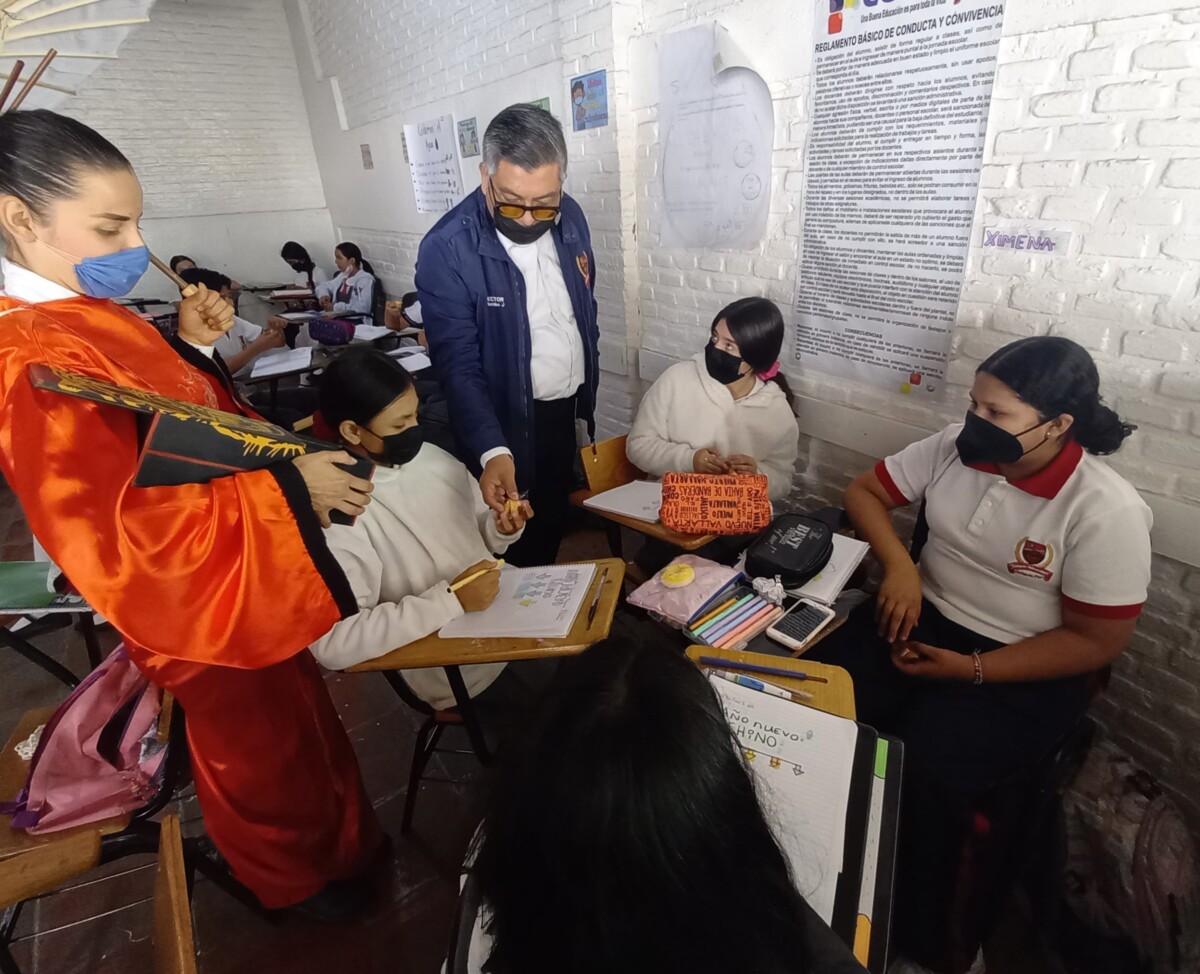
El director del CUOP, Martín Morales Juárez regaló a los alumnos galletas de la fortuna, en el inicio del “Año del Tigre”. Foto: CUOP.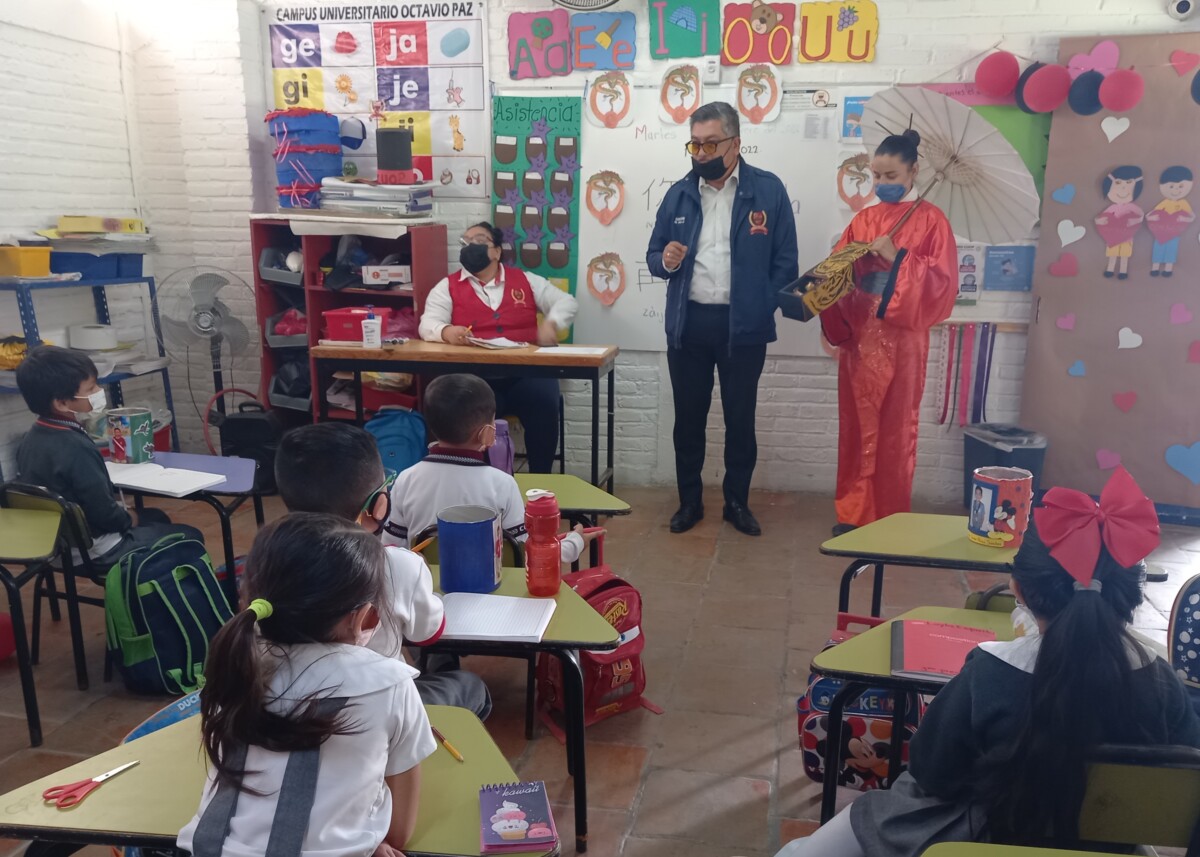
La celebración involucró a todos los alumnos del plantel.
Detienen a dos por posesión de narcóticos en Chapala
Los hombres presuntamente portaban droga sintética y otros narcóticos.
Redacción.- Dos sujetos fueron presentados ante el Ministerio Público por presuntamente portar droga sintética y otros narcóticos; la detención fue efectuada como parte de las acciones preventivas que personal operativo de la Secretaría de Seguridad del Estado (SSE) mantiene en Chapala.

Uno de los arrestados fue Francisco “N”, de 28 años, quien tenía 14 envoltorios con cristal.
Fue en el cruce de las calles Francisco Villa y 28 de Febrero, en la delegación Santa Cruz de la Soledad, donde un sujeto que circulaba en una motocicleta sin placas intentó escapar al percatarse de la presencia de los oficiales, logrando interceptar metros adelante a Francisco “N”, de 28 años, a quien le fueron localizados en uno de los bolsillos del pantalón 14 envoltorios que contenían cristal.

El otro de los retenidos fue Brandon Isaí “N”, de 20 años, quien cargaba bolsas transparentes con marihuana.
Al sitio llegó otro hombre a bordo de una motocicleta intentando interrumpir el trabajo de los uniformados, motivo por el que aplicaron los protocolos de seguridad a quien se identificó como Brandon Isaí “N”, de 20 años, encontrando entre sus pertenencias cuatro bolsas transparentes con marihuana.
Ambos sujetos fueron detenidos y puestos a disposición de la agencia ministerial con sede en Chapala para dar continuidad a las investigaciones correspondientes.
Chronicles of La Ribera:
By: María del Refugio Reynozo Medina
The original tithe ledger where the contributions pledged by the parishioners were recorded. Photo: María del Refugio Reynozo Medina. Courtesy Historical Archive of the parish of San Cristóbal Zapotitlán.
«Honor the LORD with your possessions and with the first fruits of all your produce,» so says the biblical quote from Proverbs 3:9.
Nena is 85 years old and her sister Consuelo is 95 years old. Consuelo remembers that since she was about five years old, her parents taught them the Catholic faith. Even before the temple was finished being constructed they would go to mass. She remembers that the children brought little buckets filled with donkey excrement and straw to make the traditional adobes on site. In those years there was a lot of excrement available to make adobe. Animals were allowed to go loose, walking, chewing the grass in the streets, getting between the fences.
The settlers not only contributed to the construction of the temple, whose exact date is unknown, but also to the ongoing support of the church through the tithe.
In the historical archives of the parish of San Cristobal Zapotitlán are the tithe ledgers, or the books where the income that the church received from the parishioners was recorded.
The tithe was commonly given from the fruit of the harvest, sometimes the offering was chickens, pigs or even eggs. In these historical records, which date from 1966 to 1970, the names and the number of loads of harvest that were given to the church appear (a load was about two sacks or “costales” as we know them today). The parish priest was Pedro Ramírez González. Nena remembers him, he was a tall, blue-eyed, laughing man.
-I remember my dad carrying a small load of corn from his land clearing for the tithe.
During the harvest months, you could see dozens of donkeys outside the temple unloading bags of grain, usually corn, sometimes chickpeas. Behind the temple, where Alcoholics Anonymous meetings are held today, there was a shed where they kept whatever was tithed.
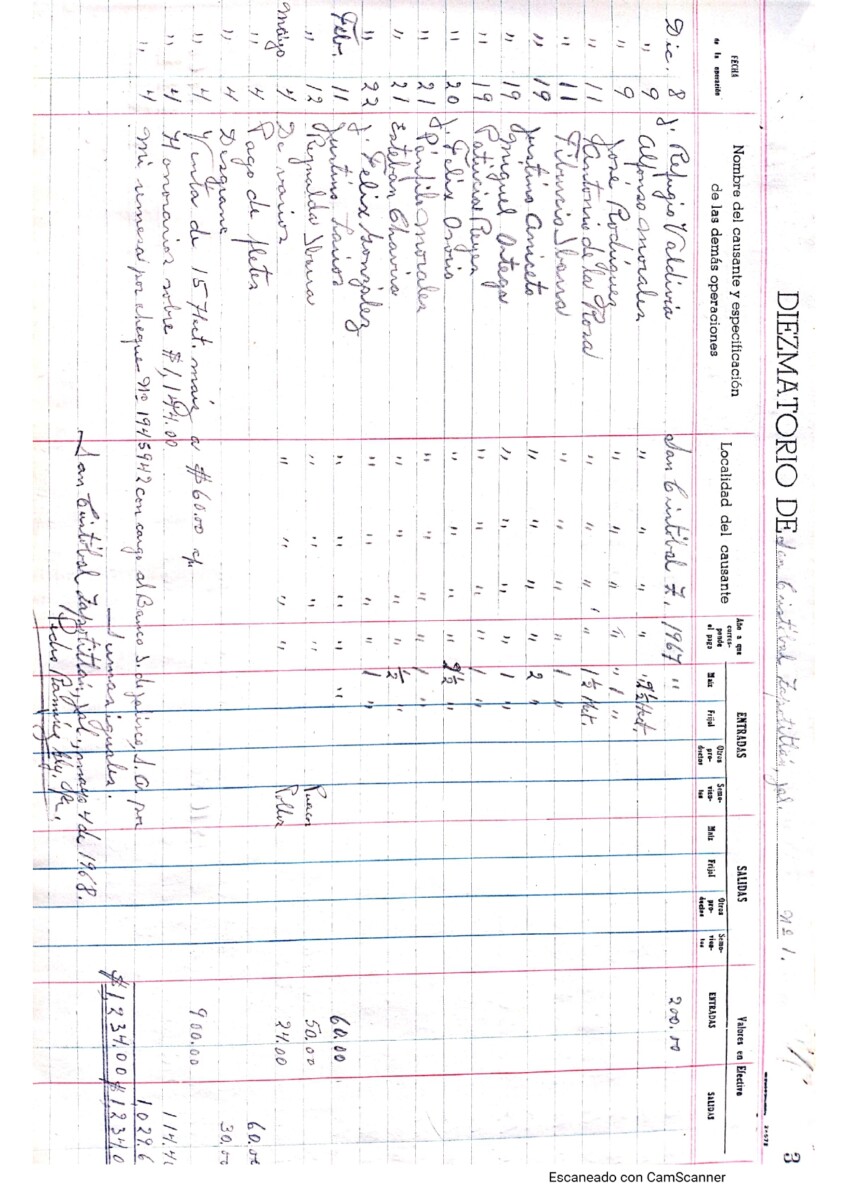
The tithe was signed by the priest Pedro Ramírez González. Photo: María del Refugio Reynozo Medina. Courtesy Historical Archive of the parish of San Cristóbal Zapotitlán.
Nena remembers that some brought chickens. She would go out into the streets with a basket to collect eggs house by house for the improvements of the church, and also money for the priest’s allowance. Many chicken sellers came to the town.
-They would shout, «Gallinas que vendaaan!” “Chickens for sale!” They carried them on their shoulders holding them by their legs and others carried them by their fists like bunches.
In the historical archives appears a list of the names of the characters that existed, all of them now deceased, but alive in the memory of this 85-year-old woman.
One of the names is Florentino Gaspar pledging 2 loads of corn. He and Carmen Mosqueda were the owners of a store where they sold petroleum that was the fuel for the devices that illuminated the nights, because there was no electric energy. They kept it in big drums and the people came to get it in bottles.
They also sold the corn with which the women made the nixtamal, to later turn it into tortillas that they prepared every day on a stove and with a metate. The lard was sold in a rectangle of brown paper.
Another name that appears is that of Benjamín Medina, pledging 7 loads of corn.
Daniel Cervantes appears in the roster pledging 11 loads. He was a generous benefactor of the temple; Cervantes donated the images of the Sacred Heart and the full size Virgin Mary that he brought from Guadalajara and is still in the parish today. He and his sister Luz Cervantes sold a piece of land to contribute to the completion of the church.
The list goes on; Alfonso Morales, who pledged one load. He was the father of Julia Morales, the petite, dark-haired woman with the eternally smiling face in charge of the mail. Many women anxiously awaited her passage on the mail route.
It was said that on one occasion a suitor asked her if she wanted to be his girlfriend, and she replied, «Later.» She was asked again to know his answer, she said she meant later in another time. And she continued to deliver sighs from house to house.
-I haven’t received anything, Julia,» some of the women would plead.
Juanita remembers anxiously awaiting Julia’s arrival, because her husband was in the United States working and among the love letters came some US dollars.
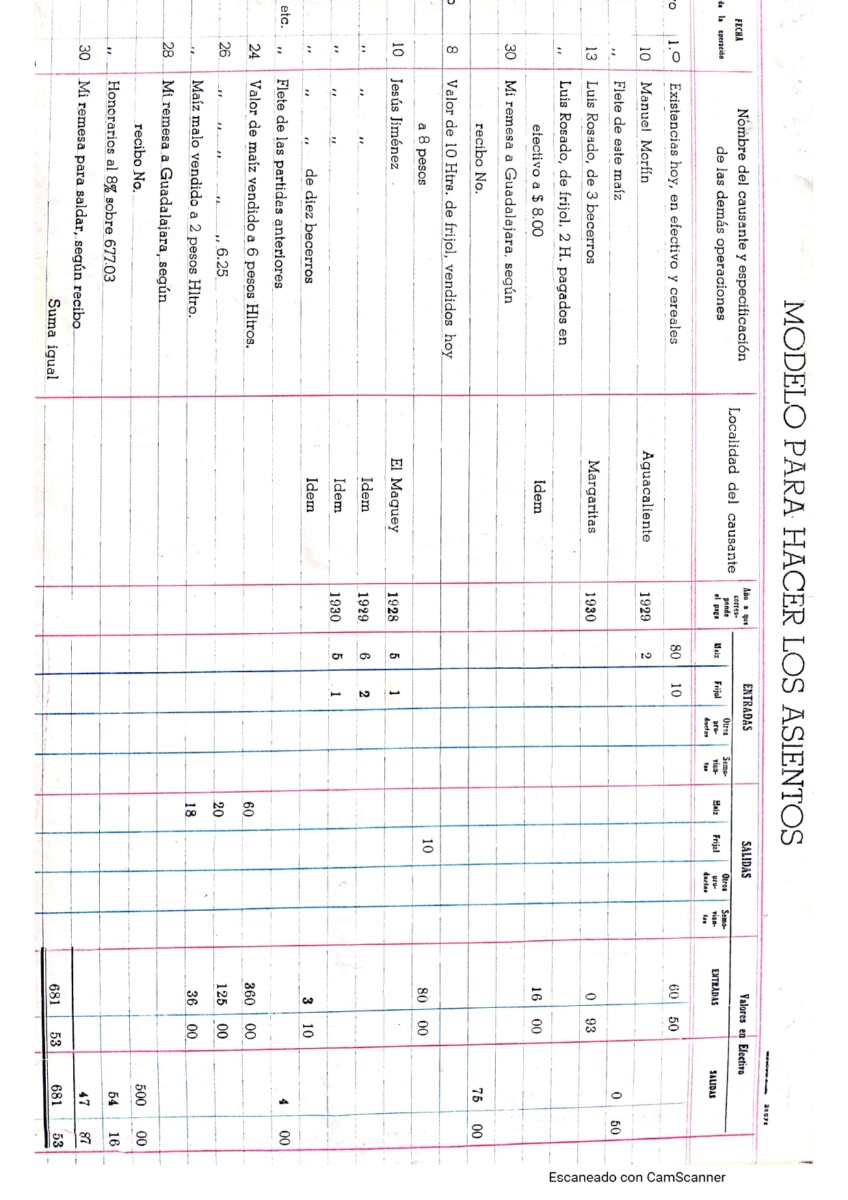
Example of filling out the tithe. On the first page of the document. Photo: María del Refugio Reynozo Medina. Courtesy Historical Archive of the parish of San Cristóbal Zapotitlán.
Justino Larios, who also pledged a load, was a great musician, he played the clarinet. His sister Dominga Larios had the first telephone booth in town, the wooden booth was attached to the wall, it had a handle and keys to dial.
-San Cristóbal calling San Pedro,» the operator Dominga Larios would say.
She relayed many phone messages from the priest.
In the tithe list is also José Rodríguez who contributed a load. He was a bricklayer, almost the only one in those days. He made his houses all the same, a small room with a window and a corridor.
Esteban Chavira also appears in the record with the contribution of half a load, he did religious plays or ‘pastorelas’ in the street, he read the dialogues to the devil and to Gila who was another character.
One of the songs said:
-The Virgin was washing and St. Joseph was tending, the child was crying from the cold he had.
The rehearsals for the pastorelas were at night when the men and women finished their days under the protection of candles or oil lanterns. When someone wanted the shepherds to sing for them they would invite them and make them food, that was only at Christmas time.
Nena remembers that, in one procession to Jocotepec during the traditional January festivities of the Señor del Monte, Chavira made a float and took Victor Amezcua as Jesus Christ, the people even cried to see the character so real, they say that this photo was taken to Rome by a priest who came to visit and the people went on a pilgrimage to greet him at the crossroads.
Brígida Velasco, who pledged half a load, made very ornate wax candles, the ornaments stood out like a glow of the wax itself. Nena remembers a scene with Brígida holding the wick and letting the wax drip to form candles of all sizes. Brigida’s son was a hairdresser, they say that he used to splash water on his clients’ heads to prepare their hair for the haircut.
The drawn landscape of the San Cristóbal of yesteryear seeps through the memories of the men and women who lived it. Memories fade, but the names of those who existed are there in the documents, in the tithe lists that remain the mute witness of the inevitable passage of time.
Translated by Kerry Watson
Vinculan a pareja por muerte de niño en Atotonilquillo
Sofía G., madre del menor y su pareja sentimental, Marcos Alberto G. se encontraban bajo los efectos de estupefacientes, en el momento del agravio.
Redacción.- Por el delito de parricidio y homicidio calificado en agravio de un menor de 14 meses de edad, su mamá y la pareja sentimental de ésta fueron sometidos a proceso penal.
Las indagatorias que realizó el personal de la Fiscalía Regional asignados a la delegación de Chapala, permitieron establecer que el pasado 31 de diciembre, Sofía G., madre del menor y su pareja sentimental, Marcos Alberto G. se encontraban en la finca ubicada en la calle Hidalgo, de la colonia Atotonilquillo, del municipio de Chapala, bajo los efectos de estupefacientes.
En un momento dado, el menor comenzó a llorar por hambre, situación que a los imputados desesperó y empezaron a golpear al bebé en repetidas ocasiones hasta que terminaron por arrojarlo al piso, ocasionándole una fractura de cráneo que inmediatamente le provocó la muerte.
Al conocerse la noticia criminal, el agente ministerial inició con las indagatorias que permitieron establecer la posible participación de la pareja, por lo que se solicitó una orden de aprehensión en su contra a un juez, la cual se cumplimentó en días pasados.
Una vez que se reunieron los datos de prueba, la madre del menor y su pareja sentimental fueron presentados ante el juez, quien al valorar los datos de prueba, decidió vincularlos a proceso por los delitos de parricidio a Sofía G. y homicidio calificado a Marcos Alberto G., además que ordenó como medida cautelar un año de prisión preventiva oficiosa.
Detienen a secuestradores que tenían privados de la libertad a dos agricultores de Jocotepec
De las pesquisas realizadas se desprende que Miguel Ángel “N” es líder de la banda y originario de Baja California Sur, mientras que Héctor Manuel “N” y Víctor Manuel “N” son oriundos de Sinaloa, y Jesús “N” del estado de Guerrero.
La Unidad Especializada en Combate al Secuestro de Jalisco (UECS) de la Fiscalía del Estado, permitió la liberación de dos hombres secuestrados, quienes son agricultores, y la aprehensión de los cuatro probables responsables.
Ellos son Miguel Ángel “N”, Héctor Manuel “N”, Víctor Manuel “N” y Jesús “N”, quienes fueron imputados por el agente del Ministerio Público por el delito de secuestro agravado y logró que el órgano jurisdiccional los vinculara a proceso con prisión preventiva oficiosa por un año, como medida cautelar.
Con estos resultados el presunto grupo delincuencial fue desarticulado totalmente por la UECS y se evitó que continuaran operando en la entidad y el resto del país.
Los hechos por los que fueron detenidos ocurrieron el 15 de noviembre del año en curso, cuando los ofendidos, quienes son agricultores de berries, fueron privados de su libertad por varios sujetos cuando se dirigían a bordo de una camioneta marca Chevrolet, tipo colorado, un rancho ubicado en carretera Morelia – Guadalajara, en el municipio de Jocotepec.
Horas más tarde familiares de las víctimas comenzaron a recibir mensajes de texto con amenazas y en donde les pedían 15 millones de pesos a cambio de la libertad de las víctimas, por lo que acudieron a denunciar los hechos ante la Fiscalía del Estado.
Desde que tuvo conocimiento de la noticia criminal la Unidad Especializada en Combate al Secuestro realizó diversas diligencias en campo y gabinete, logrando asegurar la camioneta propiedad de una de las victimas la cual estaba abandonada en el poblado de Hacienda San Martin en Jocotepec.
Al continuar con las investigaciones del caso, posteriormente se logró dar con un vehículo Ford tipo Fiesta, platino, que fue utilizado en el secuestro; se desprende que en dicha unidad las víctimas fueron llevadas al lugar del cautiverio ubicado en la colonia Nueva Jerusalén, en el municipio de Sayula.
Continuando con las labores de inteligencia se obtuvieron datos de prueba sólidos de que en dicho punto se encontraban los probables secuestradores, por lo que bajo el mando y conducción del agente del Ministerio Público se implementó un operativo que arrojó resultados positivos con la detención de los cuatro sujetos así como la liberación de las dos víctimas quienes se encontraban sanas y salvas.
De las pesquisas realizadas se desprende que Miguel Ángel “N” es líder de la banda y originario de Baja California Sur, mientras que Héctor Manuel “N” y Víctor Manuel “N” son oriundos de Sinaloa, y Jesús “N” del estado de Guerrero.
Todos ellos fueron presentados ante el Ministerio Público quien logró integrar una carpeta de investigación en la que acreditó la probable comisión de secuestro agravado, por lo que judicializó el caso.
Una vez que fueron puestos a disposición del Juez de Control y Oralidad ratificó como legal su detención y luego de la audiencia de imputación, entró al análisis del caso y valoró los datos de prueba aportados por esta representación, los cuales le dieron certeza y dictó el auto de vinculación a proceso contra los cuatro sujetos por el delito ya señalado, dictándoles la medida cautelar de prisión preventiva oficiosa por un año.
La Fiscalía del Estado exhorta a las víctimas de este delito a denunciar de forma inmediata en la Unidad Especializada en Combate al Secuestro, ya que es un área especializada en la investigación de estos hechos, por lo que cuenta con personal altamente calificado en el manejo de situaciones de riesgo, quien desplegará labores de inteligencia con recursos tecnológicos y científicos de última generación, para salvaguardar la integridad de las personas afectadas, hasta resolver el caso.
© 2016. Todos los derechos reservados. Semanario de la Ribera de Chapala
